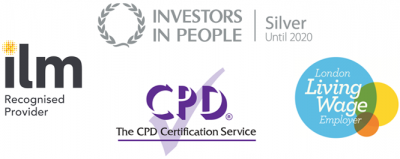Apr
06
2017
Use storytelling to motivate and inspire others
By Jakki Bendell.
Storytelling is one of the most powerful techniques we have to persuade others. Long before movies, TV series or even the first books, humans have been hard-wired to love and remember stories. Not just for entertainment, but for inspiration too.
We connect with stories at an emotional level. Great communicators know this, and increasingly, storytelling is seen as an essential business skill that can be learned. But how can we use storytelling to motivate an employee to take on a new responsibility, or inspire a team to overcome a work challenge? What makes a compelling story in the workplace?
Consider The Hero’s Journey. This is the classic structure of books and films, from Jack and the Beanstalk to Bridget Jones. It takes the listener on a journey from now (what is or was) to a new, more desirable place (what could be). It literally moves the listeners towards your position.
Start with ‘the big idea’
Nancy Duarte in her book Resonate describes the big idea as ‘that one key message that you want to communicate’. For example, ‘our profits this year are poor (what is): for our survival, every department needs to support the cost-cutting measures’ (what could be).
Or ‘our employees are reporting high levels of workplace stress; let’s make it easier for them to be happier and healthier at work.’
This is the journey on which you want to take your listeners.
Add some conflict
Good stories need conflict. The main character (hero) wants something (get the girl, kill the monster, catch the criminal). To get it, they have to overcome an internal flaw (lack of courage, addiction) or a series of challenges (more monsters, difficult supervisors, obstacles).
In the same way, your listeners at work will often need to change their internal beliefs and/or external behaviour in order to bring about the big change you are looking for.
A powerful way to illustrate this dramatic tension is the contrast of good versus evil. For example, ‘stress is expensive for our organisation and our people’s happiness (evil). Let’s commit to policies and practices to reduce workplace stress (good).’
The moment where good finally conquers evil is called the climax. Harry Potter defeats Voldemort. Bridget Jones marries Darcy. Your project gets the funding. Your main competitor is left trailing in the dust.
Find inspiration in your own life
“The best storytellers look to their own memories and life experiences for ways to illustrate their message. What events in your life make you believe in the idea you are trying to share?” says Carolyn O’Hara in The Harvard Business Review. Relevant personal anecdotes can also make you appear more authentic and accessible.
Don’t overdo it though. Focus on what you learned or experienced rather than your achievements. Where possible make other people the heroes of your story – your listeners are more likely to identify with them.
Learn from others
The TED.com website is a great place to observe storytelling on virtually any subject you can imagine.
Each video is less than 20 minutes long. Check out Ken Robinson: Do schools kill creativity?, Susan Cain: The power of introverts and Jamie Oliver: Teach every child about food. Look for story structure, but also how the speakers use their body language, voice and even props to support dramatic tension.
Discover more about storytelling and other powerful techniques on our course Advanced face-to-face communication at work.
Jakki Bendell is an experienced consultant, trainer and coach specialising in business writing and communication skills. From a background in marketing and international new business, and with expertise as a professional writer, Jakki is interested in how to communicate ideas in today’s hectic business environment. She has extensive experience in helping people in both the private and public sectors communicate their ideas in bids and tenders, reports, proposals, correspondence, web and content marketing.


